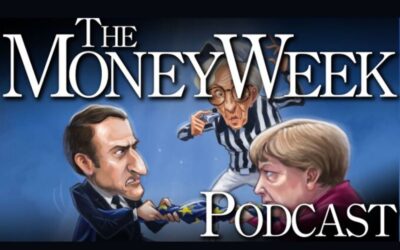11/08/20203 mins
Monthly Commentary – July 2020
The recent rebound in global stockmarkets stuttered in July as signs of a Covid-19 resurgence dented hopes of a swift economic recovery. Further turbulence in Sino-US relations also presented a drag for investor sentiment. These concerns were reflected in the weaker US dollar, which contributed to the overall flat performance for the month.
Although many investors had been largely content to look through the current economic weakness to an expected recovery, rising coronavirus infections in some parts of the world created a sense of unease. Most notably, progress towards containing the virus in the US faltered in several states, leading to the imposition of new restrictions. More positive news came as several pharmaceutical companies announced positive clinical data for vaccine candidates, offering hope that a medical solution could be in sight.
Meanwhile, the brutal impact of lockdown measures on economic activity was laid bare as the US recorded its worst annualised quarterly GDP (-32.9%) since the Second World War. This weakness was reflected in second quarter earnings reporting. While most companies’ earnings were crimped by lockdown restrictions, some notable exceptions benefited from ‘stay-at-home’ orders. Technology and internet companies were prominent among those, though several leaders of the ‘Big Tech’ companies suffered a grilling by the US Congress regarding harmful market dominance. US-China relations provided no succour as the US ordered the closure of a Chinese diplomatic outpost, with China responding in kind.
Since February’s market lows, unprecedented monetary and fiscal stimulus packages have offered investors scope for optimism. Policymakers continue to work apace on measures to blunt the economic impact of lockdowns. The EU agreed a €750 billion fiscal stimulus package – albeit with a greater proportion of loans than grants. However, the US was unable to agree a proposed $1 trillion support package as Republicans and Democrats remained at loggerheads.
Despite its struggles to contain the pandemic, Latin America delivered July’s strongest returns, as Brazil edged towards enacting much needed reforms. Asia Pacific (ex Japan) also produced good returns, helped by economic data showing that China had returned to economic growth. Dollar weakness masked strong local currency returns for US stocks, where major indices closed in on their pre-pandemic levels. The weakest returns came from Japan and the UK.
July’s strongest sectors were consumer discretionary, materials and information technology, in part helped by robust earnings from beneficiaries of stay-at-home spending. Meanwhile, economically sensitive sectors featured prominently among the main laggards: energy, financials, real estate and industrials.
In the commodity markets, the price of gold moved to an all-time high, briefly touching $2,000 per troy ounce, helped by the weaker dollar. The move also reflected continued uncertainty and the prospect of rising inflation resulting from central bank largesse.
Aided by the rising gold price, our gold miners continued to record robust gains in July, including Newcrest Mining and Newmont. We see no end in sight for the current environment of unfettered money printing which, we believe, bodes well for our positive view on gold.
Please remember that past performance may not be repeated and is not a guide for future performance. The value of shares and the income from them can go down as well as up as a result of market and currency fluctuations.
Please note that SIT Savings Ltd is not authorised to provide advice to individual investors and nothing in this article should be considered to be or relied upon as constituting investment advice. If you are unsure about the suitability of an investment, you should contact your financial advisor.



